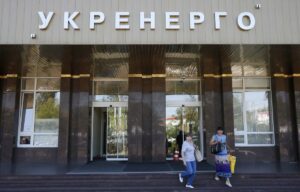
Gazprom is thus far keeping to a stable approach to the use of Ukrainian transit capacities.
“You see our bookings. Our bookings are visible. Thus far, we remain at the same level,” Gazprom deputy head Elena Burmistrova said during Investor Day when asked about the prospects of increasing transit.
“We’ve had a very difficult winter in Europe, in Russia, in Asia. So we are now looking at our balances and resources – and looking at how we are going to move forward following the end of Q1,” she said.
In April, Gazprom pumps an average of 124 million cubic meters per day through Ukraine, fully using booked volume.
Europe is experiencing a notable shortage of gas for pumping into underground gas storage facilities.
Last Friday, the Ukrainian GTS Operator unexpectedly announced an auction for additional gas pumping to Europe in May in volume of half of current supplies: 64 million cubic meters per day above the current pumping capacity of 124 million cubic meters. However, capacity was left unused following the auction.

The Indian strain of coronavirus, which causes COVID-19 disease, is less dangerous than the British strain of coronavirus, experts at the Institute of Molecular Biology and Genetics of the National Academy of Sciences of Ukraine say.
“In our opinion, the British strain of the coronavirus is much more dangerous than the ‘Indian’, which has spread widely across Europe and Ukraine,” Director of the Institute Mykhailo Tukalo told Interfax-Ukraine, referring to the results of a study of the Indian strain by the Institute’s specialists.
Tukalo noted that the Indian strain has a new combination of mutations that are dangerous in terms of infectious properties, which were previously separately identified in different strains of the coronavirus.
“Thanks to these mutations, the virus penetrates into human cells faster. The genome of the Indian strain has about 25 mutations compared to the reference Wuhan strain,” he said.
The scientist recalled that another dangerous strain of the coronavirus, South African, has already been discovered in Ukraine, regarding which “the facts of the action of existing vaccines are not encouraging.” Moreover, the Indian strain has a mutation similar to the South African one.
The expert noted that the Indian strain has not been found in Ukraine yet, but has already been recorded in more than 20 countries around the world.
“Perhaps, this strain has not reached our country yet, but perhaps the reason is that very little sequencing is carried out in Ukraine – the study of mutations by decoding the virus genome sequence. Of course, it is necessary to establish constant monitoring and research of coronavirus strains,” he said.
Tukalo stressed that “the study of mutations will allow both to prevent new waves of the disease and to evaluate the effectiveness of treatment, as well as to understand the need to develop and use existing or new vaccines and the introduction of anti-epidemic measures to avoid the spread of dangerous strains.”
“Our institute has a successful track record of sequencing coronaviruses,” he said.
According to the world database GISAID, the “Indian” strain of coronavirus was detected by sequencing in more than 1,500 samples.
As reported, the PRC health authorities have recorded the “Indian” strain of the coronavirus COVID-19 in several cities in China.

JTI Ukraine tobacco company in 2020 produced 15.9 billion cigarettes at a factory in Kremenchuk (Poltava region), of which 6.04 billion were exported for $ 117.7 million, Director General of Japan Tobacco International (JTI) Ukraine Paul Holloway said in an exclusive interview with Interfax-Ukraine.
He noted that the export of cigarettes by the company remains stable, despite the contraction of the Ukrainian cigarette market. Last year, JTI Ukraine exported its products to 14 countries, including Japan and Mexico.
“We are planning to turn the factory in Kremenchuk into a large export hub. Our factory is very flexible and can produce various types of products – we export not only cigarettes, but, for example, filters, which are then used to produce cigarettes in our other factories. We hope that our factory in Ukraine will continue to increase exports,” the director said.
He clarified that he hopes for further revenue growth from the export of the factory’s products in Kremenchuk. According to him, an important factor that influenced the company’s export plans was its obtaining the status of an authorized economic operator, which will reduce customs formalities when importing raw materials and exporting finished products.
Holloway noted that JTI, which received this status as the first in Ukraine, will receive a number of advantages when passing through customs formalities in Ukraine, including the opportunity to use a special dedicated traffic lane for commercial vehicles.

PrJSC Ukrainian Ceramic Group (Sloviansk, Donetsk region) in 2020 reduced its net loss by 32.5% compared to 2019, to UAH 3.9 million.
According to the company’s annual report in the information disclosure system of the National Securities and Stock Market Commission, revenue increased by 19%, to UAH 5 million.
Retained earnings for the year decreased by 6.8% and amounted to UAH 53.7 million.
Long-term liabilities decreased by 5.1%, to UAH 11.2 million, current – increased by 47.8%, to UAH 18.7 million.
The company’s assets in 2020 increased by 1.5% and amounted to UAH 101.3 million.
PrJSC Ukrainian Ceramic Group was founded in 1993. It does not produce clay due to the completion of the development of a deposit in Donetsk region in 2009. Currently, it is engaged in leasing and purchase and sale of real estate.
The company also owns 48.9% of the shares of PrJSC Zeus Ceramica (Sloviansk, Donetsk region).
The charter capital of PrJSC Ukrainian Ceramic Group for April 2021 is UAH 1.16 million.

PrJSC Ukrenergo in 2020 received UAH 27.498 billion of net loss against UAH 1.857 billion of net profit for 2019.
According to the report published in the information disclosure system of the National Securities and Stock Market Commission, the company’s net income last year increased 2.2 times (by UAH 31.921 billion), to UAH 58.249 billion. The gross loss amounted to UAH 24.950 billion against UAH 6.052 billion in gross profit in 2019.
Earlier, Ukrenergo repeatedly noted that the operator’s main activity in transmission and dispatching in 2020 is profitable, while losses are associated with special obligations imposed on the company for the population and coverage of the feed-in tariff to the state enterprise Guaranteed Buyer, the costs of which are not fully covered by the established tariff.
Ukrenergo operates the trunk and interstate power grids, as well as the centralized dispatching of the country’s integrated power system. It belongs to the state represented by the Ministry of Finance.

Volt Resources Limited (Volt, Australia) announced the signing of binding share purchase agreements to acquire a 70% stake in Zavalivsky Graphite LLC (Zavallia, Kirovohrad region).
“Volt has entered into binding Share Purchase Agreements to acquire a 70% interest in the Zavalivsky Graphite business located in Ukraine. The completion of the acquisition will position Volt significantly ahead of most of its peer graphite companies to become a graphite producer without the usual Greenfield financing and development risk,” according to the company’s press release.
According to the company, the total purchase price is $7.6 million, and it will be paid in two equal amounts.
Among the main advantages of the acquisition is, in particular, the opportunity to become a producer of spherical purified graphite for li-ion battery anode market in the near future, excellent transport infrastructure, low labor costs, grid power, ample potable water and good communications, experienced technical, operational and marketing personnel.
According to Nadra info, Volt’s press release states that the company has signed SPAs with the existing shareholders of ZG Group and will acquire a 70% stake in each of the ZG Group companies: Zavalivsky Graphite LLC (processing plant buildings, processing plant, mining equipment, substation and power distribution station); Stone Found LLC (operations for the production of crushed granite and a plant), as well as Graphite Invest LLC, which owns 70% of the shares of PrJSC Zavalivsky Graphite Plant (mine, land, main administrative building).
Nadra info also informs that currently the shareholders of ZG Group are Vitaliy Liaschenko (Kirovohrad region), Oleh Kheison (Cherkasy region), Tetiana and Volodymyr Kolesnichenko, Marta Yanko (all – Kyiv), and Mogra s.r.o. (Slovakia).
For many decades, Zavalivsky Graphite LLC has been a producer of natural graphite from the ores of the Zavalivsky deposit (Kirovohrad region), one of the largest graphite deposits in Europe. The enterprise has been operating since 1934. Production capacity is 30,000 tonnes of graphite per year.
According to Industrial Minerals (Great Britain), Zavalivsky Graphite LLC is one of the world’s top ten producers of natural graphite.